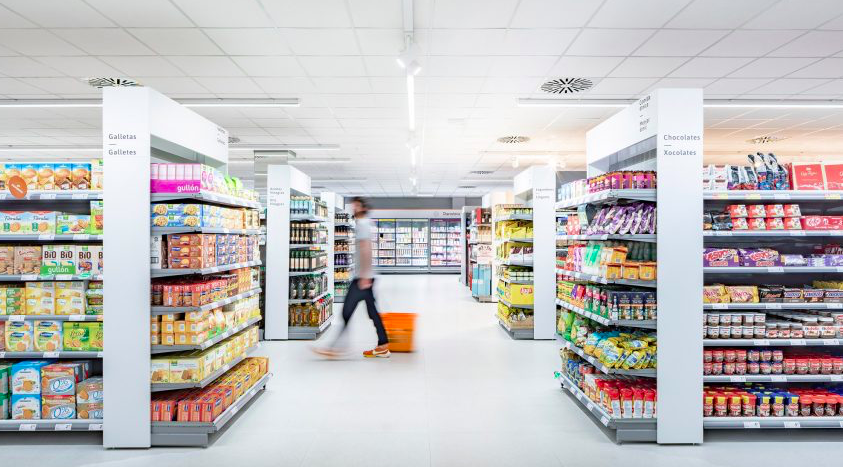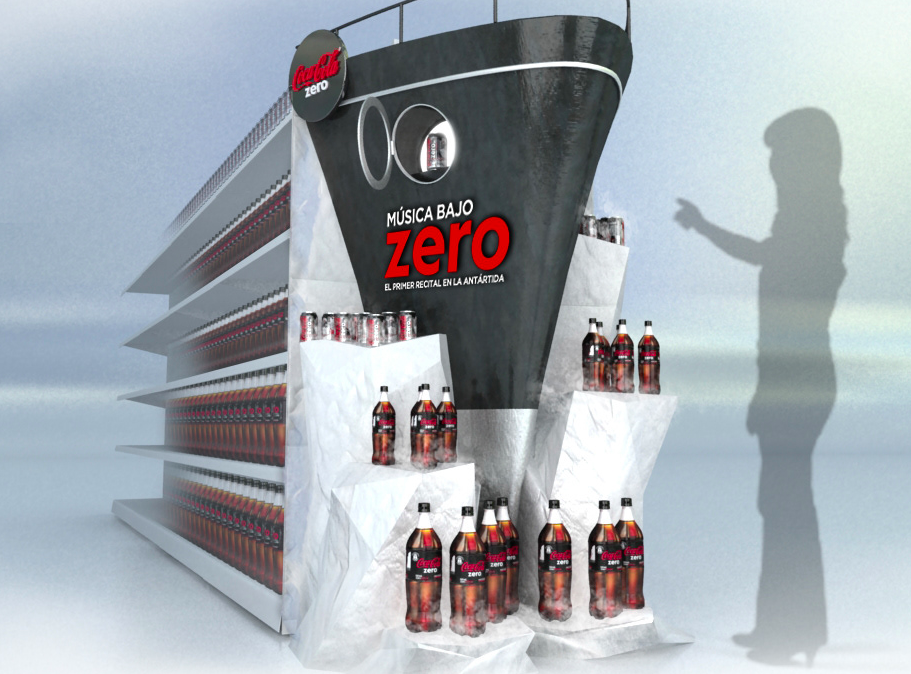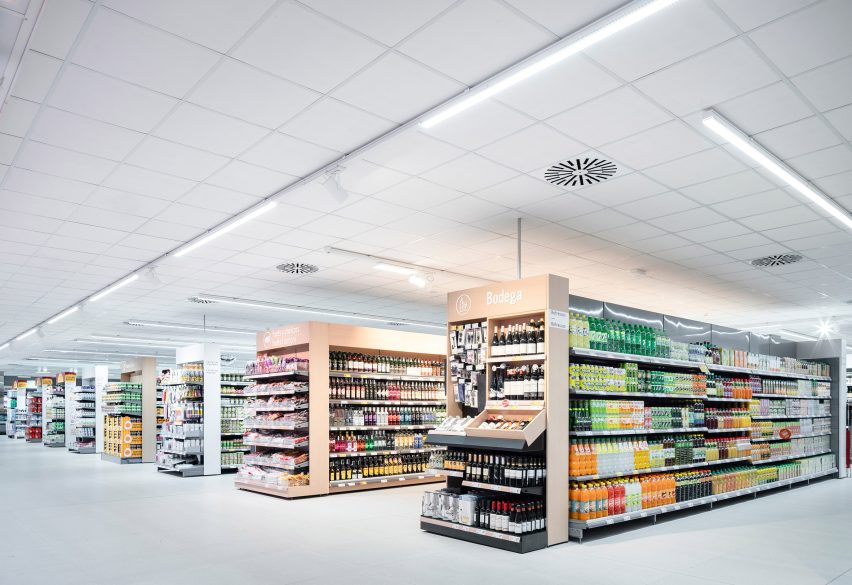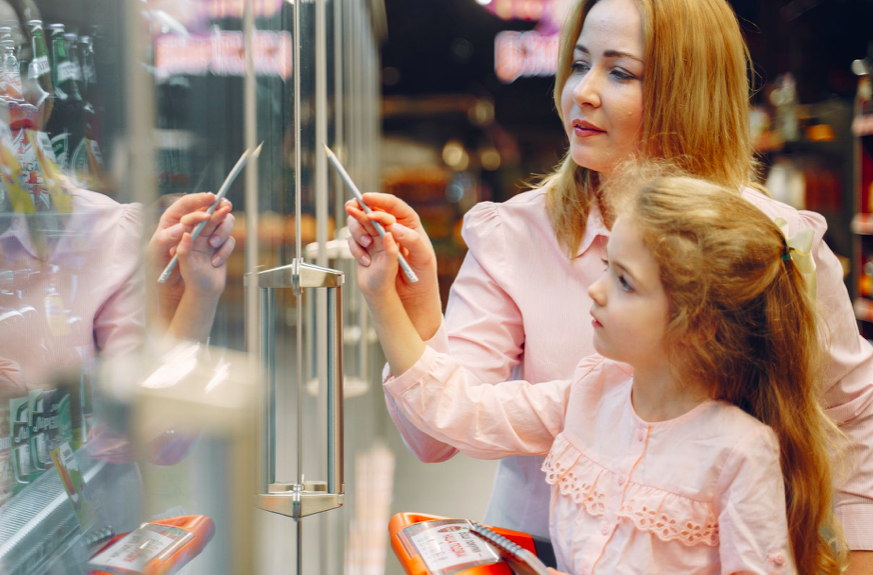
In order to catch the attention of the Shopper at the point of sale, it is very important to make yourself visible over the vast variety of products and the existing rivalry between competitor brands. Creativity and innovation play a key role in the strategies to be able to highlight our products..
In this article we include some key points worth considering when exhibiting our products at the point of sale.
What does an exhibit need to be successful at the point of sale?
1. Manage to exhibit at hot spots
One of the most important strategies to consider at the point of sale is to secure the hot spots for our products and manage to transform cold spots into opportunities.
"According to Storecheck data, 44% of shoppers fix their eyes towards headers, another 42% toward gondolas and 10% toward stoppers or hanging banners at the shelf " 1
It is worth mentioning that inside supermarkets, points of sale are divided into:
To manage the right exhibit for products at the point of sale it is important to condition the customers buy and attain a sales increase. It is worth mentioning that a good exhibit must include POP Material (promotional material to accompany the products at the exhibits).

2. The right arrangement of the product
The product must be directed toward the field of vision; the front side of the product product must face the Shopper.

When exhibiting the products, it is important to respect the minimum surface a product must have at the gondola so the consumer will notice it.
It is recommended as a minimum to have three fronts; nevertheless, if the items are too narrow, it is important that the length be 20 cm so the shopper will correctly notice it.
To accomplish this, we must identify the planogram; i.e., the design that determines how a product must be placed at the exhibit, be it linear or showcase, depending of the variety or category
The planogram helps the shopper to more easily do the buying, thanks to the proper organization of the products, and at the same time increase the level of satisfaction in the consumer. On the other hand, it is important to improve visual appeal of the gondolas, as well as to facilitate the replacement of the products.
It is important to mention that it can also help determine how large the sale is.

3. Avoid stock disruptions.
When speaking of stock disruptions, we mean the empty spaces at the gondolas in the point of sale. Something seemingly so simple can have grave consequences among them:
““According to a Shopper Engagement Study, performed by POPAI, 82% of buying decisions are made right at the point of sale.”2

4. Avoid saturating the linear
The linear is defined as all the space assigned at a point of sale point of sale for exhibiting the productsproducts. Saturation of products at the linear may cause the Shoppers to think that they are not rotated enough, having as a consequence a decrease in sales. This is why some brands leave spaces between products, for the purpose of avoiding that misconception.

5. Use your own Exhibits & Create Experiences
Why do exhibits at the point of sale motivate the desire to buy?
Visual messages have the purpose of grabbing the attention of Shoppers who are inside the shop, giving them additional information that is useful to find out the advantages of the product. This way they can be positioned as a good alternative to meet their needs.
Your exhibits at the point of sale must be your best sales booster, the most productive and efficient and the “Visual Merchandising” must be the art that helps the store increase income.
With this type of exhibits the need arises to surprise the Shopper, telling a story through the colors that make their shopping experience more attractive, carrying their imagination to different places and creating new moods accompanied by unforgettable moments.
The main function of “Visual Merchandising” in a business is to attract shoppers and inviting them to buy more. For this reason, “Visual Merchandising” takes on a strategic role, not only by attractively displaying the product, but also defining the Shopper’s behavior, by offering interesting information about the product.
The arrangement at the store does not only cover a sales space, but also a buying experience for the Shoppers, causing them to want to spend more time at the store finding out all that is sold inside.

It is important to consider that, nowadays, the consumer is exposed to many ads that can even be invasive, therefore to be creative and innovating takes on great importance in order to be able to stand out over competitors.
A helpful option may be to apply Experiential Marketing; that is to apply strategies where the Brand, through emotions and feelings, generates bonds that will remain for a long time.
“82% of brands think they are offering an optimal experience, while 72% of consumers have found inconsistencies in the same experience in some of the contact points”.3
In Experiential Marketing you use the five senses, so as to have a direct interaction with the Shopper and generate human experiences through an interaction that will help establish an emotional bond. This strategy generates a change in the way to communicate with the Shopper where he becomes the leading role and the product simply contributes toward an unforgettable experience.
“In a customer experience study, it is mentioned that 86% of consumers would pay more for a product or service if it was accompanied by an improved or better experience than the rest”.4
Which is a campaign example of Experiential Marketing?
M&M´s flavor halls
When M&M´S became aware that it needed a new flavor, the company decided to do it by applying Experiential Marketing.
The experience included the innovating “flavor halls” and each had different decor and fragrancies according to the flavor they exhibited.

The experience also included snack and drink halls with M&M´s theme cocktails. This was an excellent opportunity to connect with attendees and was shared in social media.
Conclusions
Product exhibits at the point of sale means their selection, placing and presentation at the exhibits, for the purpose of attracting the Shopper and motivating the buying action. This allows for, in a practical manner, taking advantage of the sales space by generating the correct circulation or flow of customers.
From the placing, the front, the entrance and the showcases, to the lighting, furniture and cash registers. It must all be carefully planned, by knowing the product in detail, the brand, the customer and the exhibition spaces. It is important that the products at the point of sale have a certain amount of order and arrangement so that this way the Shopper approaches and will not walk away. To keep them in the right way helps the stores increase sales.
No doubt, the use of POP Exhibits is a great tool to highlight your products at the point of sale and at the same time generate a unique brand experience for the Shopper. In many cases, they become your best sales ally.
Sources:



